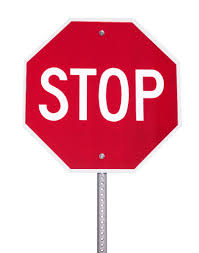The Humble Stop Sign: More Than Just a Red Octagon
Ever found yourself staring at a stop sign and wondering, “Why do we need this simple, red octagon?” It seems so straightforward, but there’s actually a lot more going on with stop signs than meets the eye. Let’s dive into the fascinating world of these everyday road fixtures and explore why they play such a crucial role in our driving experience.visit there
The Origin Story
The stop sign has a rich history that dates back over a century. It all started in the early 20th century when the automobile industry was booming, and traffic regulations were just beginning to take shape. The first stop signs were introduced in 1915 in Detroit, Michigan. They were not the bright red, octagonal signs we see today but rather black and white, with a simple rectangular shape. This change came about because people realized the need for a more noticeable and universally recognizable sign to ensure safety at intersections.
Why the Shape and Color Matter
You might wonder why stop signs are shaped like an octagon and why they’re always red. The octagonal shape is not just for aesthetics; it has a practical purpose. It was chosen because it stands out from other road signs, which usually come in different shapes. The unique shape helps drivers quickly recognize the stop sign from a distance, even when visibility is poor.
As for the color, red was selected because it’s a color that universally signifies danger or warning. Red is one of the most noticeable colors and has been shown to grab attention effectively. This combination of shape and color is designed to make sure that the stop sign is immediately recognizable, no matter the driving conditions.
The Rules of Engagement
When approaching a stop sign, it’s crucial to understand the proper protocol. First and foremost, drivers must come to a complete stop. This means that the vehicle must halt fully, not just slow down. After stopping, you should yield to any oncoming traffic or pedestrians before proceeding. This rule ensures that all vehicles and individuals are given a fair chance to navigate the intersection safely.
It’s worth noting that stop signs are often placed at intersections where visibility is limited or where traffic patterns make it necessary to ensure everyone approaches with caution. So, when you see one, remember that it’s there to keep you and others safe.
The Psychology Behind Compliance
Have you ever noticed that some drivers seem to treat stop signs as mere suggestions rather than strict rules? This behavior can be attributed to a variety of factors, including impatience or misunderstanding of the traffic laws. However, studies show that compliance with stop signs is crucial for preventing accidents. By making a full stop, drivers give themselves the opportunity to assess the intersection thoroughly, reducing the likelihood of collisions.
Interestingly, research has also revealed that the visibility of stop signs plays a significant role in compliance. If a stop sign is obscured by vegetation or other obstacles, drivers are less likely to notice it and, consequently, less likely to stop. This highlights the importance of regular maintenance and clear sightlines for these important road signs.
Stop Signs and Pedestrian Safety
Stop signs are not just about managing vehicle traffic; they also play a critical role in pedestrian safety. At intersections with heavy foot traffic, stop signs ensure that drivers remain vigilant and aware of pedestrians crossing the street. In places with schools or busy shopping areas, you often see stop signs to protect children and other pedestrians.
For pedestrians, stop signs at crosswalks signal to drivers that they need to yield. This simple yet effective measure helps create a safer environment for everyone. It’s always a good idea for pedestrians to make eye contact with drivers before crossing, just to be sure they are seen and acknowledged.
Innovations and Modern Adaptations
In recent years, technology has introduced new ways to enhance the effectiveness of stop signs. Some modern stop signs come equipped with LED lights that flash to draw even more attention. These lights can be especially useful in areas with high traffic or where visibility is particularly challenging, such as during fog or heavy rain.
Additionally, interactive stop signs are being tested in some locations. These signs can be equipped with sensors that detect approaching vehicles and activate warning signals when necessary. This kind of innovation represents a significant leap forward in traffic safety technology, ensuring that stop signs continue to fulfill their crucial role in an ever-evolving traffic landscape.visit here
The Future of Stop Signs
As traffic technology continues to advance, the role of traditional stop signs may evolve. Future innovations could include smart signs that communicate with vehicles, providing real-time updates and instructions to enhance safety. For example, vehicles could receive notifications about upcoming stop signs or changing traffic conditions, allowing for better decision-making.
However, despite these advancements, the basic principle behind the stop sign remains the same: to ensure safety at intersections. While technology may change how we interact with stop signs, their fundamental purpose will continue to be a cornerstone of traffic management.
Conclusion: A Simple Sign with a Big Impact
So, the next time you approach a stop sign, take a moment to appreciate its importance. What might seem like a simple red octagon is actually a vital component of road safety, designed to keep everyone—drivers, passengers, and pedestrians—safe. Understanding the history, purpose, and modern adaptations of stop signs helps us recognize their value in our daily lives.
In essence, stop signs are more than just traffic markers; they are an integral part of our road safety system. By adhering to the rules and staying aware of these signals, we contribute to a safer driving environment for everyone. So let’s give a nod of appreciation to the humble stop sign—it’s doing a lot more than just standing there, and it’s keeping us all a little bit safer every day.back to home

